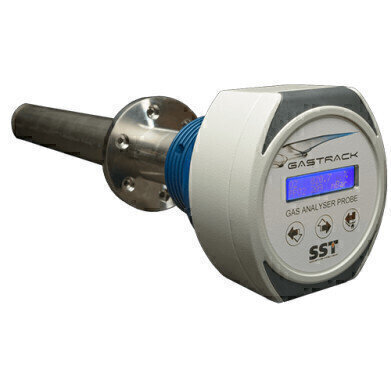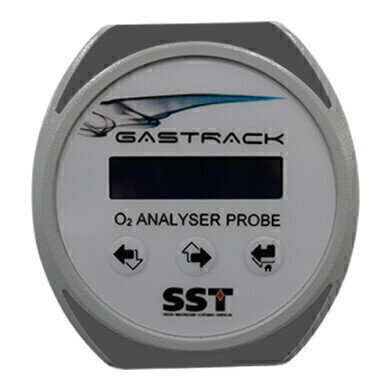Gas detection
GAP Gas Analysis Probe for Boiler/Burner Combustion Efficiency
Jan 16 2019
Legislation is often seen as a hindrance to efficient running of a process, but it can also lead to significant research and development efforts to address environmental issues and reduce waste and air pollution.
Combustion efficiency/optimisation is one area where legislation aligns with business concerns and environmental impact can be minimised at the same time as cost saving realised.
Efficient control of the combustion process plays an important role in reducing NOx output, reducing wasted furl costs, increased lifetime of the flue or stack and increased process efficiency y reduction in thermal loss.
Fundamental to this efficiency is the selection of the correct oxygen sensor used to monitor and control the combustion process where it is estimated that every 1% reduction in excess oxygen, translates to a reduction of 20% NOx output and a further 1% reduction in fuel costs (source: North American Manufacturing Handbook).
In choosing the correct oxygen sensor, process engineers need to take account of response time, sensitivity to the target gas, repeatability of readings/long term stability, ease of maintenance, ease of calibration, lifetime of the sensor and ease of the installation and communication.
For 16 years SST have been manufacturing Zirconia based oxygen sensors with a unique failsafe measuring principle. Our sensors are used widely in combustion efficiency processes, environment monitoring and on-board aircraft systems. Continuous investment in research and design have produced rugged sensors with enhanced accuracy, resistant against vibration and high resistance to corrosion providing sensors with long lifetimes and allowing the sensor to be used in the harshest environments. Response times of under 15 seconds and accuracy of better than 0.25%, provides industry leading sensors engineered to perform better and last longer.
Our newest design is the GAP Gas Analysis Probe, an all-in-one solution for combustion efficiency control in flue gas temperatures up to 700degC (1292F). The sensor is an in-situ stainless steel probe but with two bore tube system that draws the gases across the sensor via the pitot effect. This unique method is a semi extractive process allowing the sensor to be contained outside of the stack/vent wall and allowing maintenance to be carried out without removal of the probe.
The sensor is designed to need only one span point calibration which can be made in fresh air (20.7% O2), or the external calibration port can also be used to inject instrument or calibration air to the sensor should be specific calibration points be requested.
The sensor head contains the electronics, cable gland connection, user replaceable sensor module (containing the O2 sensor, PT100 temperature sensor and pressure compensation sensor) and is attached to the stainless steel probe with a clamp. Removal of the head takes seconds and this also exposes the twin tubes which can easily be cleaned of any dust and soot.
Maintaining the stoichiometric ratio between rich and lean fuel conditions is simple with the GAP Gas Analysis Probe.
4-20mA outputs for oxygen concentration and pressure provide linear signals for process control. Two relay outputs with one for control and one for fault conditions provides reliable set point control. RS485 Modbus RTU provides remote communication and control of relay outputs as well as multi drop addressing and system configuration.
The front panel display is IP65 rated and has soft touch push buttons allowing system configuration, manual relay control and commissioning tests. The display provides a two line readout of O2%, ppO2, temperature, pressure, relay set points and states, plus any fault codes.
The GAP Gas Analysis Probe is an ideal solution for minimising costs via accurate measurements, long service life, low maintenance, and simple operation.
Technical support is available by phone or email directly with the design engineers who can immediately answer any questions and speed up installation and commissioning.
Digital Edition
IET 35.2 March
April 2025
Air Monitoring - Probe Sampling in Hazardous Areas Under Extreme Conditions - New, Game-Changing Sensor for Methane Emissions - Blue Sky Thinking: a 50-year Retrospective on Technological Prog...
View all digital editions
Events
Apr 30 2025 Ankara, Turkey
May 06 2025 Nuremberg, Germany
May 10 2025 Karachi, Pakistan
May 11 2025 Vienna, Austria
May 11 2025 Seoul, South Korea
.jpg)




.jpg)

.jpg)




_(4427399123)-(2).jpg)

.jpg)









